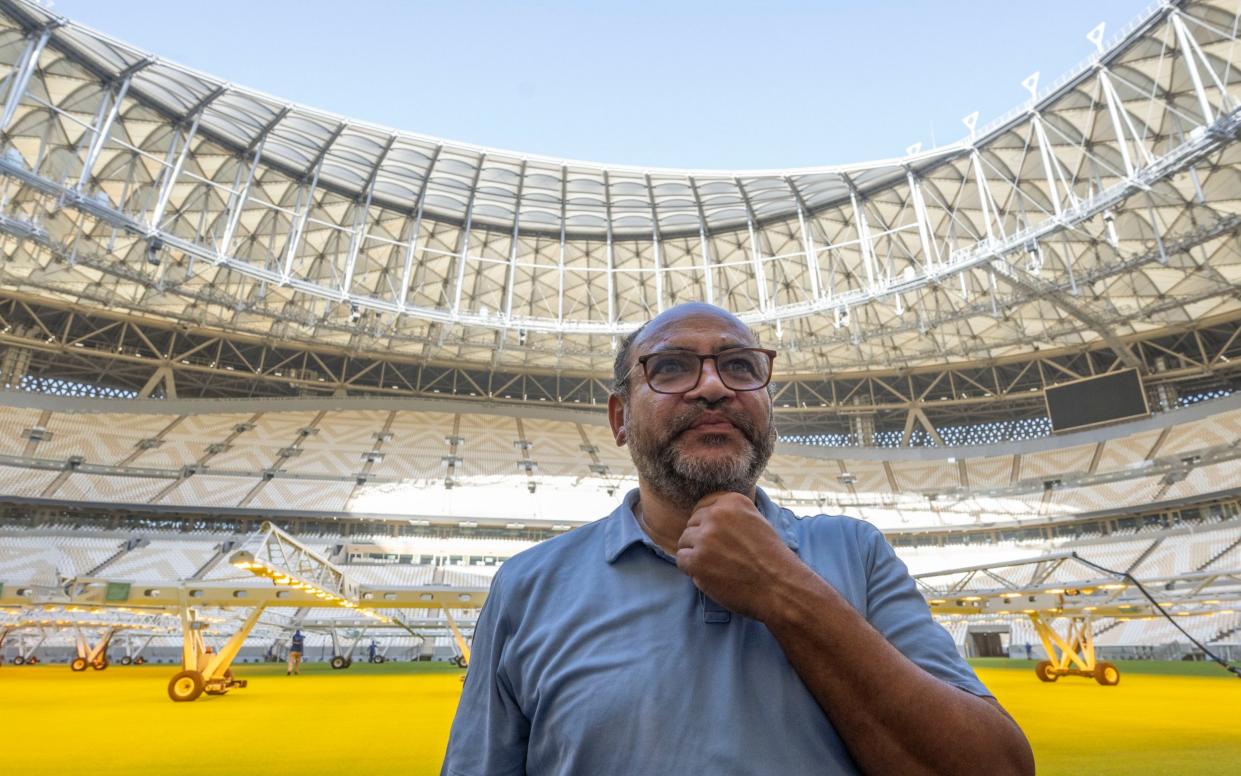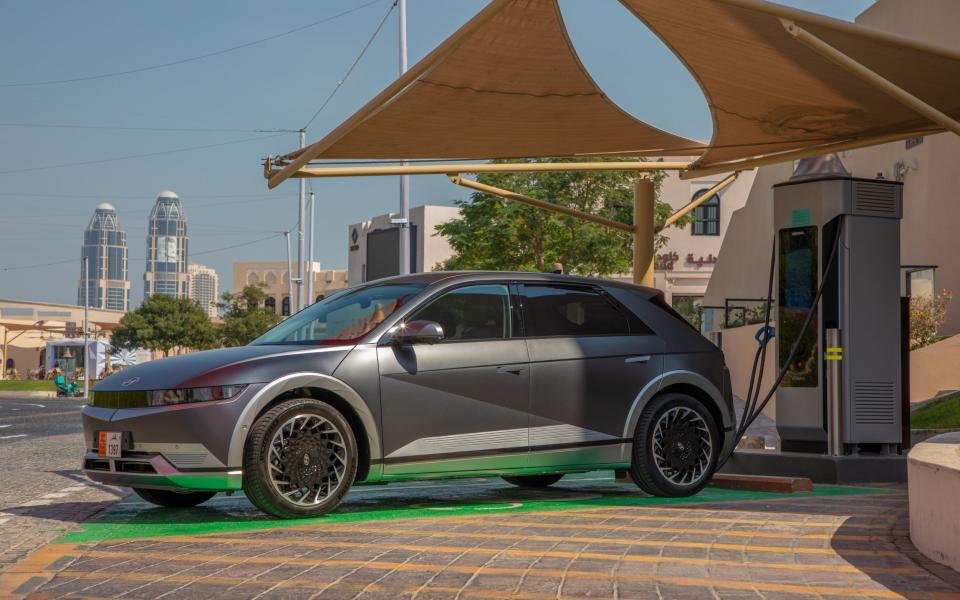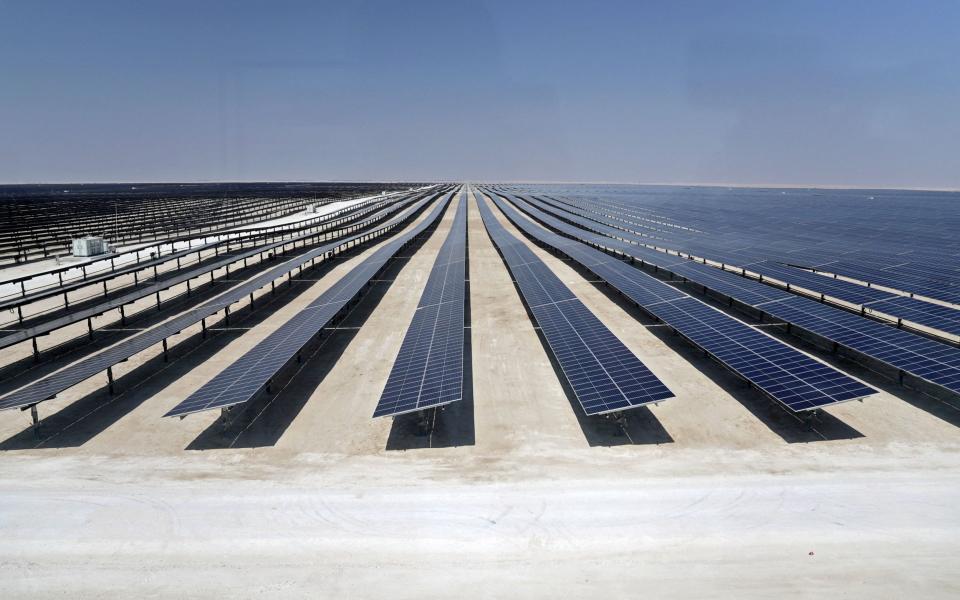Electric cars in the desert: the man behind Qatar’s solar power revolution

We are being gawked at like we have landed from the future. Cruising the corniche in downtown Doha in a Hyundai Ioniq 5 electric car is like being the only person using a laptop computer in a 1960s typing pool.
We are being swarmed by Qataris in their beloved piston-engined American behemoths. They lift off the “thirsty pedal” long enough to stare at us, then they are off on their busy ways in a fug of Arabia’s finest combustible black gold.
With unleaded petrol costing less than 50p per litre in Doha, it’s little wonder Qataris are hardly rushing to replace a V8 badge on their cars for one that says EV. This desert peninsular is also the world’s third largest exporter of natural gas. In places like the UK, Qatar is helping keep us warm this winter.
Qatar; sun-rich but still not rushing for net zero
There is no pressure at the moment to go net zero in Qatar, which is ironic. With a population of three million in a state the size of Wales, in a place where the sun shines for nine and a half hours a day, it could run itself entirely on solar power. The proof lies 50 miles out in the desert and under the accelerator pedal of this car. In October, Qatar fired up the first of a network of massive new solar energy farms, just in time for the FIFA World Cup.

Using only 10 per cent of its capacity (all of which could satisfy a city the size of Southampton), it will power a revolutionary air-conditioning system for the football stadiums. With the remainder it is also helping to power electric buses and free EV charging points – one of which has given us the juice for a 200-mile day trip around Qatar.
Professor Saud Ghani, a former academic at various universities in the UK and now a professor of mechanical engineering at Qatar University, is the brainchild of the football stadia air-conditioning system. He has been nicknamed Dr Cool.
“The main thrust of building that solar farm is to expand the energy basket for Qatar, it’s to have more security on the energy side,” says Ghani. “Qatar does not have rivers, so it can't do hydropower. In Qatar, we don’t have a lot of wind and we don’t have a lot of wave energy. So, the only available source of clean energy for us is solar. So now the technology is there and we’re trying to push the boundaries of that technology and make sure that we optimise our energy balance.”
I tell the professor we have a battery-powered Hyundai in which to get around Qatar. He is not surprised we have not had to wait when we have been to the fast charger in the tourist (and likely football fan) hotspot of Katara. EV drivers are a rare breed here.
“Electromobility is a good thing,” he says. “It is even better if you have solar panels or generate that amount of energy from solar or wind, or wave, or geothermal or whatever is available in that particular country.”

He doesn’t believe me when I tell him that the Ioniq 5 has solar panels built into the roof. I have to show him a photo of us in the desert earlier in the day not only recharging that car but topping up another EV which did not have solar panels. Hyundai claims the solar panels can add 1,200 miles a year to the range of the car.
Coast to coast in Qatar is not like the USA; here, it’s barely 100 miles. On our westward drive to the unspoiled beaches and ruins at Zekreet, we found Heenat Salma Farm. Owned by the Qatari Ambassador to the UK, it bills itself as an Eco-Farm and Camp. It is certainly both those things but having transformed a local conventional farm into an ongoing project in 2019 to become a centre for regenerative agriculture in the desert.
Heenat Salma is one of a number of farms following Dr Cool’s lead and using sustainable energy to power cooling greenhouses to make the Arabian Desert cool and fertile enough to grow fruit and vegetables.
On the way back to Doha, we stop at the current epicentre of Qatar’s solar energy future – the Al Kharsaah solar farm. Entry is not allowed, but for a mile or two you can drive alongside the solar panels making our zero-emission drive possible. Stretching over the horizon, the farm covers roughly the equivalent space of 1,400 football pitches.
We have to hand back the Hyundai, as it’s needed as one of a fleet of more than 100 which will be used to ferry VIPs around Qatar for the next six weeks. For most eco-minded visitors to the World Cup, EV mobility will be by electric bus. The world’s largest fleet of 1,000 of these battery buses is up and running; charging them uses only 20 per cent of the solar farm’s output.

It makes sense in the desert, but what about solar back at home?
While temperate countries such as the UK have less than half the hours of annual sunshine per year of Qatar, and there are less than four weeks of Qatari UV levels, solar is still practical. Depending on the size of the panel and the electric car you are using, between 10 and 12 panels will charge a family EV for 40 miles of use a day.
“I think solar panel charging is an area which will grow in popularity,” says Tom Riley, author of The Fast Charge weekly EV newsletter. “People are now moving to put solar panels on their roof, as that's the ultimate sort of zero emission motoring. Also, adding electric cars as batteries. There have been exciting trials recently, and we might see more people who do the school run or commute but then come back in the evening and plug their car back in, and power their house with the car’s battery.”

 Yahoo News
Yahoo News 
